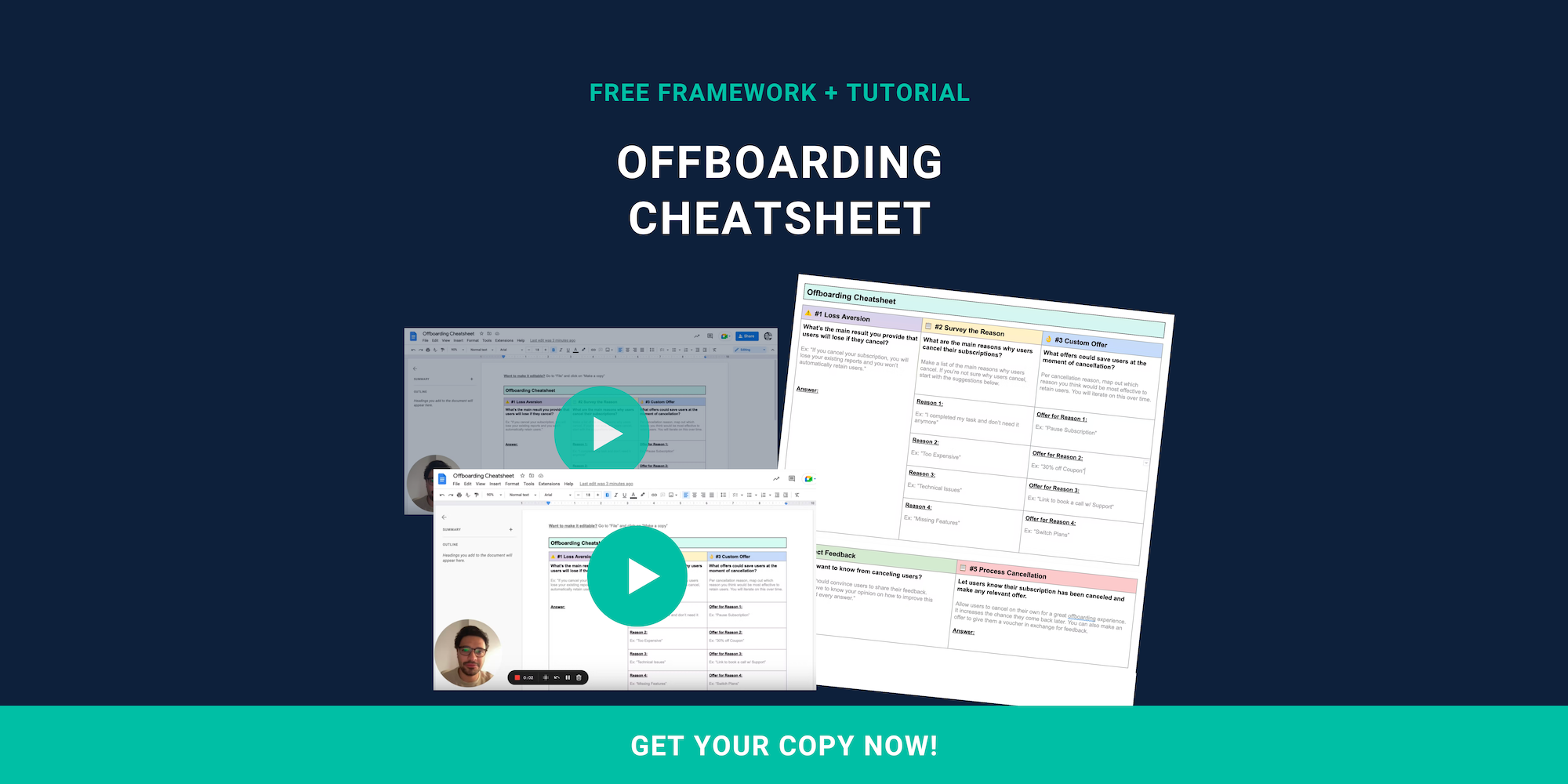Do you know how to value a SaaS company?
If you're embarking on a SaaS growth journey, you need to know how to value a SaaS business.
When it comes to evaluating a SaaS business for acquisition, a range of different variables come into play.
Whether you're a bootstrapped SaaS founder or a part of a well-backed startup, understanding how to value a SaaS company is critical for negotiating the right acquisition price.
How To Value A SaaS Company (7 Areas To Consider)
Revenue
First and foremost, revenue numbers are at the forefront of any SaaS valuation.
To get an ARR-based valuation for your SaaS company, you will need two numbers:
- Annual Recurring Revenue (ARR)
- Growth Rate
While there is no shortage of resources online for calculating SaaS valuations, this online calculator (based on a formula by David Cummings) is an excellent resource.
The online calculator uses the following formula:
Valuation = 2 x ARR + ARR x (1+ 2.5 x Growth Rate)
When it comes to EBITDA-based valuations, the multiples attached to these valuations can vary depending on your ARR.
For instance, while some suggest EBITDA-based valuations can carry multiples of 2.5x to 4x, others are more bullish, with multiples as high as 6x.
Churn Rate
When a SaaS company's churn rate is too high, this can throw the sustainability of your business into question.
As such, a high churn rate is often one of the key valuation metrics used by potential buyers when looking at a SaaS business.
To calculate the churn rate of a SaaS business, divide the number of customers who left in a given period by the total number of customers at the beginning of that period.
Customer Lifetime Value
What is the average customer worth to the SaaS business?
If the SaaS product is well-built, there are likely opportunities for expansion revenue.
For instance, the company could upsell existing users and encourage them to pay extra for add-ons.
Even if the company is dealing with considerable churn, the expansion revenue could help to offset some of those losses.
Ideally, you want to see a SaaS business with a high average customer lifetime value and low churn.
This indicates that the company is able to consistently keep its customers happy.
When potential buyers have the reassurance of a solid customer base with a good foundation, this makes the business more attractive and valuable.
Nobody wants to buy a SaaS business with a persistent leak.
If the business is losing 20% of its customers each month, this is a big turnoff for potential acquirers.
Customer Acquisition Cost (CAC)
How has the business acquired customers and what costs were associated with these efforts?
Potential acquirers want to know how much it is costing the business to get people to sign up for free trials or demos.
If the company is not generating enough revenue to offset these costs or has to wait several months or years to see a return on its investment, this will impact the valuation of the business.
A high CAC is sometimes a red flag for acquirers.
Although, a sizable CAC isn't necessarily a bad thing.
If you are trying to raise capital, potential investors will want to understand why you need the capital.
A relatively high CAC can show investors that you need capital to fuel growth.
Source Code
In the early days, some non-technical founders will hire developers on websites like UpWork to write the source code for their SaaS projects.
While this is a great way for bootstrapped SaaS founders to get their projects off the ground, the source of this code can create questions further down the line.
The last thing you want is code that has been copied and pasted from various websites.
If you are in the market for a SaaS business, you should look for well-built products.
If they had any third party involved in the creation of the code, you should look for an IP assignment agreement in the vendor contract with the developer.
IP ownership is essential to the value of a SaaS company.

Customer Support
A SaaS business is only as good as its customer support.
When customers have questions or encounter problems, they need to know that there is someone available to help them.
If the company does not have a dedicated customer support team, this will likely impact the valuation.
Potential acquirers want to know that a SaaS company has the systems in place to adequately support customer retention and prevent churn.
The quality of customer support is relatively easy to quantify.
From first response time (FRT) to the number of support tickets submitted on a weekly basis, several metrics are used to gauge the quality of customer support.
Macroeconomic Factors
Naturally, SaaS valuation multiples fluctuate depending on macroeconomic factors.
When there is an economic downturn, venture capital often dries up.
At the moment, we are currently seeing multiples between 7-12x ARR (annual recurring revenue) as a benchmark.
For instance, if you are making $200,000 in ARR, you could expect the valuation to be around $2 million.
While macroeconomic factors come into play, the growth rate of a SaaS business can significantly impact your valuation multiple.
If you're growing at 30-40% per year, this will make your SaaS business more desirable than one with a lower growth rate.
If you have a high growth rate, investors may be happy to pay a 12x valuation multiple for your SaaS business.
Although, it's important to look at a SaaS company's growth rate in relation to ARR.
As an example, if you have a SaaS company making $20 million in ARR. A 30-40% growth rate is practically unheard of.
Lower growth rates for SaaS companies with sky-high ARR are expected.
How To Grow A SaaS Business
To grow a SaaS business, you must keep customer churn under control.
While it's easy to focus on growth marketing tactics and pour all your time into sales, it's important to develop and leverage systems that reduce customer churn.
Some churn is inevitable, but if you can keep it under control, you will be well on your way to growing a successful SaaS business.
The easiest way to do this is by turning each churn event into a learning experience.
If you can learn from customer churn, you can improve your SaaS product to prevent this from happening in the future.
Raaft enables you to collect user feedback and save customers with retention flows.
With the support of real-time analytics, Raaft gives you the data you need to make targeted improvements to your SaaS product.
If you're ready to get started, you can try Raaft for free today.

Offboarding Cheatsheet
This framework + video tutorial will help you design a better cancellation process.
Some of our featured articles

Adam Crookes

Adam Crookes

Adam Crookes
Customer Success insights in your inbox
Helping Founders and Customer Success Managers handle customer retention effectively.
We will only ever send you relevant content. Unsubscribe anytime.

